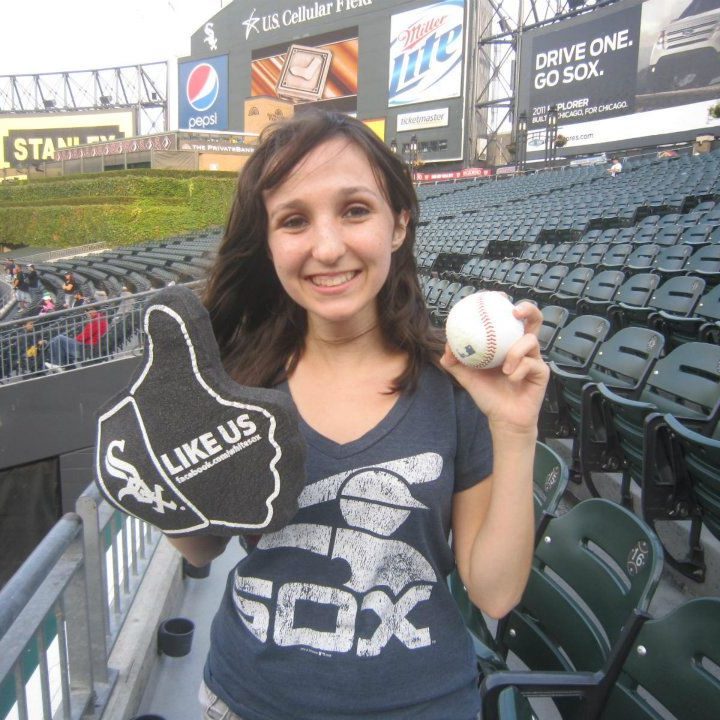It’s been 4 years since I started using my bullet journal and I won’t go back to a regular planner. For those of you who are unfamiliar with bullet journaling, the best way to learn about one is to go directly to the source: Ryder Carroll. My short explanation as a bullet journal user is a bullet journal is a completely personalized, organic, analog system for planning, goal setting, and tracking your life, career, or whatever you want. The best part is that you can make it as simple or as fancy as you want it to be. After 3 years of testing the waters, I have found some things that really work well for me and have made adjustments as needed. Here are some of the ways I use my bullet journal to stay organized.
Planning & Goal Setting
Planning and goal setting are extremely important to me. Even before I started bullet journaling, I would write down what I was working on, my goals, and due dates. I used my planners religiously. But I ended up having several planners, papers, post-its, and notes all over the place and I needed a place to compile the big picture.
The first thing I did was take stock of what tools I had, both digital and analog. I have used Google products, Evernote, Mint, Hootsuite, Asana, and many more tools to try to digitize my plans and to-do lists. Then I also had physical calendars, binders, notebooks, folders, post-its, and even dry erase boards with my plans and to-do lists. Next, I categorized what I use each tool for and wrote down how I can better use both digital and analog systems together.
After taking stock of all of the tools I use and categorized my planning and to-dos, I decided how I wanted to organize my planning and goal setting. I like having a yearly overview but I also found a new system through my bullet journal research called a calendex. Being the planner that I am, I like to set big-picture goals and then breaking them down into smaller pieces. A good example is 5-3-1 year planning. I think about where I want to be in five years as my ultimate goal and then figure out where I need to be in three years for that to happen and then I look at what I need to accomplish in one year to get to the three and five-year goals. I wanted to break that down even further so I started using a quarterly calendex system to start looking at what happens in each quarter to get me to my one-year goals. That also transfers to the yearly overview so I have a yearly snapshot of what has happened throughout the year and allows me to review and revamp my goals for the next year.
When I started planning for 2019, I took my goal planning to a new level. Each month, I write out my yearly goals after following Anna Runyan, founder of Classy Career Girl, who offers a 90-day planning challenge, and working through planning prompts from my Passion Planner. I organize my yearly goals by category, then I figure out what I need to do in each quarter to achieve my goals by the end of the year. Next, I break down each quarter 30 days at a time. Each month then focuses on the respective monthly goals and I do a reflection at the end of every month and quarter. I also added a mid-year check-in. All of this allows me to analyze what’s working, what isn’t, and what I need to adjust in order to move closer to my goals.
Perfecting the daily/weekly spread for productivity
When I first starting bullet journaling, I did a lot of research to find a system that could work for me. I really wanted to go all-in and try as many things as possible. I started by reading up on the basic idea of the daily spread. Each day you write out the date, your appointments, tasks,
After a while, I realized how time-consuming it can be to set up my weekly/daily spread. It was time to simplify because the purpose is to use bullet journaling to focus, set goals, and be productive. I found I was spending so much time setting up my spreads that I didn’t have the time or want to take more time filling out the to-dos. I decided to buy some clear label paper and make labels for my weekly/daily spreads to cut down on set up time.
From there, I realized the layout I originally came up with wasn’t working for me. I wanted to consolidate my pages. Now I only use a weekly spread. I like to record my top 3 priorities for the week, have a section for meal prep, a brain dump section, and then lay out the days of the week. This is where I write my events, appointments, to-dos, and notes for the day. Tracking the weather was fun, but time-consuming so I decided not to track that anymore. While some people use bullet journals for daily reflection like they would a regular journal, I try to keep my bullet journal focused on achieving my goals. If something happens that keeps me from achieving my goals or completing tasks, I write down a note talking about what kept me from accomplishing my to-dos for that day. For example, if I wake up sick, I make a note and write down my symptoms and say that I took a rest day.
Habit, Chore, & Routine Trackers
Trackers are what Ryder Carroll refers to as “Collections”. Many bullet journal enthusiasts create habit trackers. Mine originally started as part of my monthly spread. What I realized setting up my first habit tracker was that some habits happen daily, weekly, monthly, etc. For example, dental hygiene is a habit that would occur twice daily, but doing laundry happened on a monthly basis. At first, my habit trackers were basically a two-page list of anything from chores to reading to taking my vitamins. Each day I would check off if I did that habit/chore that day.
But last year when my dad was hospitalized and everything got turned upside down, I realized I needed a more precise plan for when chores needed to be done and what habits I need to keep up with. When you are taking care of a loved one and all of your time is dedicated to them, you forget the basics. So I sat down and separated chores from habits. And I took a step further and wrote out routines I wanted to incorporate into my life. From there I decided on the frequency of the chore, habit, or routine. I now track chores separately from habits and some of my routines include habits and chores. For example, my nightly routine includes stretching/yoga, reading for 30 minutes, dental hygiene, skincare routine, and a 15-minute tidy session. Check out my 2019 bullet journal Instagram post above to see examples of my trackers.
Vision Board
My vision board is probably my favorite piece of my bullet journal. In high school, I used to decorate my planners with magazine clippings of sayings and images that made me happy and kept me motivated. I didn’t know what a vision board was back then but each cover was a masterpiece. Over the past 3 years, I switched it up and put my vision board in my bullet journal after participating in vision board parties hosted by the Golden Women Foundation. One year I was moving across the country and didn’t have time to make it fancy so I just took a page from my bullet journal and wrote down quotes and things that inspire me. But in the past two years, I created my vision boards as I did with my planners in high school. I look at my bullet journal almost every day and when I need a reminder of what I’m working towards or need a pick me up, I review my vision boards in my bullet journals.
These are just some of the ways I like to use my bullet journal in my life. If you’re interested in starting your own, start with something simple and let yourself evolve with your bullet journal. That’s the beauty of it. You can make it whatever you want and in the end, it truly reflects who you are and what you want to accomplish in life. For more bullet journal inspiration, I recommend searching #bujo.
Hey There, I'm Mollye!

Welcome to my blog where I share experiences in my work and personal life and the tips and tricks that help me stay balanced and get everything done. Enjoy!
Related Posts
Testimonials


























